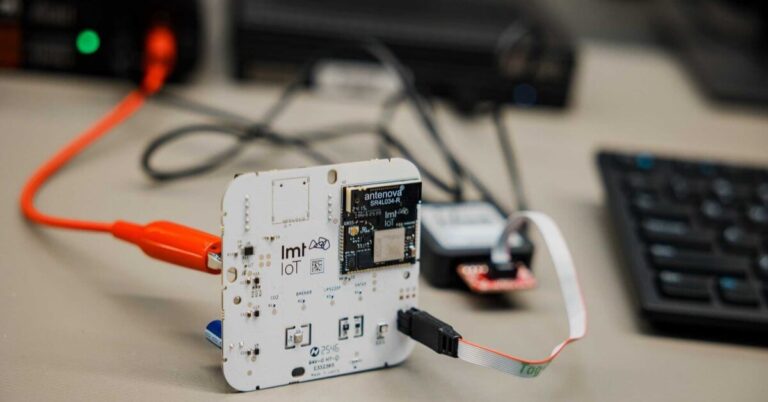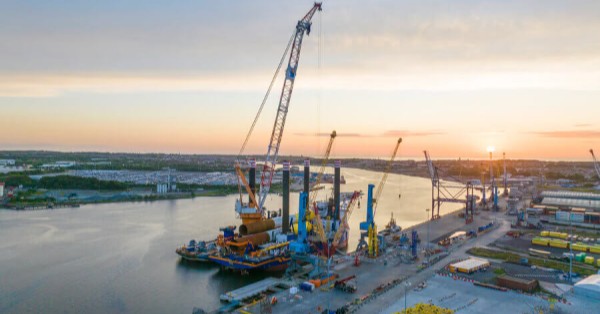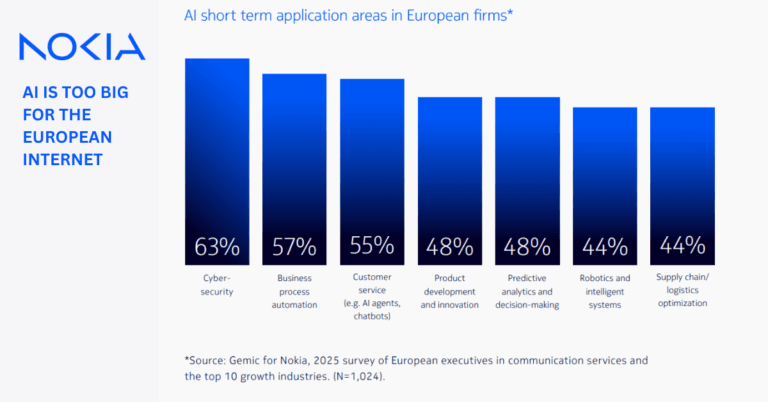US–UK AI Investments: Data Center, Power and Network Impact
Tens of billions in new US tech commitments are set to reshape the UK’s data center footprint, power needs, and network design over the next four years.
Investment totals and key US tech players
Microsoft plans to deploy $30 billion into UK AI infrastructure, its largest commitment in the country, split between new-build capacity and financing via partners such as Nscale. Nvidia has outlined up to $15 billion in UK AI-related R&D, working through CoreWeave and Nscale rather than owning the real estate. Alphabet added roughly £5 billion for AI research and infrastructure over two years and opened a new data center campus in Hertfordshire.
These moves sit under a broader US-UK “Tech Prosperity Deal” announced during a state visit, spanning AI, quantum, and nuclear cooperation. Microsoft is also joining the buildout of a government-backed supercomputer in Loughton, Essex, intended to accelerate AI research and industrial adoption. The overall vector is clear: more compute, closer to UK users, on a faster timeline.
Sovereign compute strategy with hyperscale partners
Nvidia, Nscale, OpenAI, and Arm announced Stargate UK to bolster domestic access to cutting-edge models and hardware. OpenAI expects to provide an initial tranche of around 8,000 GPUs in early 2026, with potential scaling to roughly 31,000. Nscale will expand capacity across multiple sites, including Cobalt Park in the North East, an area now designated as an AI Growth Zone. The intent is local execution of frontier models while tapping US ecosystem scale and know-how.
Telecom and Edge Architecture Impacts of UK AI Buildout
The UK’s AI buildout will stress-test national power, fiber, and interconnect while pushing workloads outward to regional hubs.
400/800G DCI, routed optics and low-latency fabrics
New campuses around London, Essex, Hertfordshire, and the North East will drive demand for metro and regional data center interconnect at 400/800G, IPoDWDM, and ZR/ZR+ optics. Carriers should expect fresh wavelength, dark fiber, and routed optical deals, plus greater use of automated traffic engineering to meet AI training and inference patterns. Latency-sensitive AI services will push peering and caching deeper into metros, making neutral IXPs and cloud on-ramps strategic.
Power, siting and grid-aligned network planning
London remains Europe’s largest data center market but is bounded by land and grid headroom. Expect a pivot to multi-region design: siting near substations and grid reinforcements, redundant fiber paths between new campuses, and heat-reuse and water-efficient cooling to lower operational risk. Operators that coordinate build plans with National Grid connection queues and local planning timetables will win first-mover economics.
Workload placement and edge AI inference
As GPU clusters come online, enterprises will re-balance training in core regions with inference at the edge. 5G SA, network slicing, and MEC can align with regional AI zones for industrial IoT, computer vision, and public-sector use cases. Telcos that integrate AI inference APIs and GPU adjacency into their MEC platforms—and expose them via standard 3GPP/O-RAN interfaces and modern service catalogs—will be better positioned in B2B bids.
Policy, digital sovereignty and AI supply chain
The UK is courting hyperscale capital while navigating energy, water, and planning constraints that can delay deployments.
Sovereign-by-design without vendor lock-in
Government deals to use OpenAI and Google Cloud services aim to accelerate modernization, yet raise dependency questions. The emerging model is “sovereign-by-design”—keep sensitive workloads and model execution in UK facilities, while leveraging US innovations. Clear guardrails on data residency, access control, and cross-border model updates will be essential to maintain trust.
Planning, energy and water constraints
Data centers were designated critical national infrastructure in 2024, but environmental groups warn about power and water impacts. The practical response is faster planning, cleaner generation, and grid upgrades alongside strict efficiency metrics (PUE, WUE) and heat reuse. Independent auditing and transparent reporting will matter as public scrutiny grows.
Risks to timelines, supply and execution
The investment wave is real, but timelines, supply chains, and public acceptance are the gating factors.
Capacity timelines and GPU/accelerator supply
GPU allocations are improving but remain cyclical, and construction lead times can slip on permits and interconnects. Watch for phasing: initial shells, partial fit-outs, and incremental GPU drops through 2026–2027. Multi-vendor GPU strategies (including accelerator diversity) can hedge risk.
Power markets, PPAs and sustainability optics
Rising AI demand collides with constrained grid capacity and volatile power prices. Without credible renewable PPAs, storage, and demand-response strategies, operators face cost shocks and reputational risk. Expect closer coupling of data center scheduling with energy markets and more on-site generation where feasible.
Market concentration and hyperscaler lock-in risks
Heavy reliance on a few US providers may compress bargaining power for enterprises and the public sector. Mitigations include workload portability, open interfaces, and multi-cloud networking that avoids proprietary traps at the interconnect layer.
What UK businesses should do now
Act early to secure capacity, align architecture to new regions, and de-risk energy and vendor exposure.
Actions for telecom and network providers
Prioritize metro fiber densification to Essex, Hertfordshire, and the North East; productize 400/800G DCI and routed optical offers; and pre-negotiate diverse routes into new campuses. Embed GPU edge options into MEC portfolios and expose standardized APIs. Co-design peering and on-ramps with cloud partners to reduce enterprise friction.
Actions for enterprises and the public sector
Book capacity early with clear data residency needs. Split architectures: train in designated regions, deploy inference near users. Build portability through containerized MLOps, model registries, and multi-cloud networking. Incorporate energy clauses (renewables, efficiency KPIs, heat reuse) into contracts.
Actions for hyperscalers and vendors
Offer transparent roadmaps on GPU deliveries, interconnect options, and sustainability metrics. Align with local skills programs and regional supply chains to smooth planning and community relations. Provide migration paths for regulated workloads that balance sovereignty with performance.
Signals to watch in the next 12–24 months
Execution milestones will show whether the UK can translate pledges into usable compute and measurable growth.
Execution milestones and metrics
Track: planning approvals and grid connection dates for Essex, Hertfordshire, and North East sites; live GPU counts against the Stargate UK roadmap; new 400/800G routes and on-ramps; renewable PPAs and storage deployments tied to these campuses; and early flagship use cases in healthcare, defense, and manufacturing. If these indicators move on schedule, expect UK AI capacity—and the networks that feed it—to scale materially by 2026.








































